Buffalo Firestix PC2-8500 Memory Review
Overall System Performance and Memory Bandwidth
PCMark05:
PCMark05 is an application-based benchmark and a premium tool for measuring overall PC performance. It uses portions of real applications instead of including very large applications or using specifically created code. This allows PCMark05 to be a smaller installation as well as to report very accurate results.
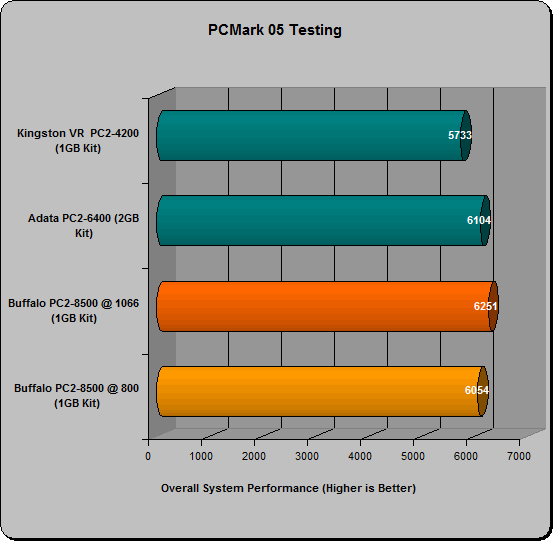
As we look at the wide range of DDR setups here, we can see that Buffalo pc2-8500 does very well for itself in PCMark against the 2GB kit from ADATA and the Kingston ValueRam 1GB kit. The default overclocked speeds of the Buffalo running at ddr1066 really help the ram to stretch its wings. Remember, there is a 66mhz difference in CPU speed between the Buffalo scores here, with the scores at ddr1066 being the higher CPU speed of the two. What was shocking to me was the diffference in score between the Kingston VR and the Buffalo at DDR800 speeds. At those settings, the Buffalo just totally out performs the Kingston.
Super PI Mod v1.5:
Super PI is a program a lot of enthusiasts use to benchmark overall system performance, as the program is capable of calculating pi up to 33.55 million digits on a timer. Many overclockers and enthusiasts are in a battle to get the lowest Super Pi times possible. We use the 2MB test this time, as it demands quite a bit more stability than a 1MB test. Of course, most believe using the 32MB test is a must to prove stability.
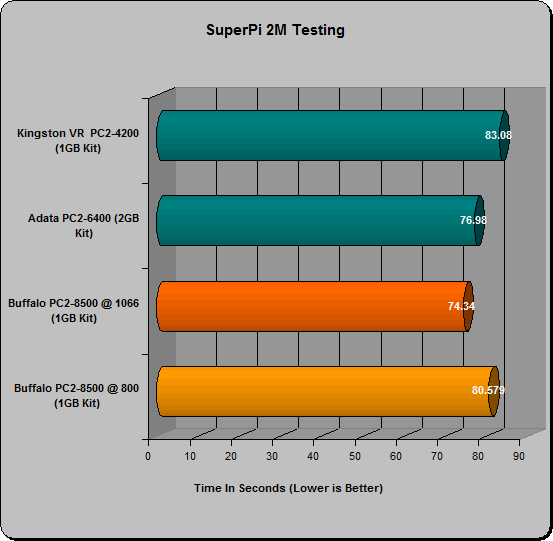
SuperPi shows us a wide range of difference between the different ddr modules that are being tested. The Buffalo clearly outpaces the Kingston VR at the DDR800 speeds. It is clear the a 2GB kit is at an advantage in SuperPi, as the ADATA 2GB kit beats both of the 1GB kits in our test at the DDR800 speeds. Once you crank up the Buffalo kit to its rated pc2-8500 speeds, it is able to beat the 2GB kit by a little over 2 seconds. The Buffalo ram is certainly outpacing the Kingston by a great margin.
Everest Version 2.20:
Everst 2.20 is a professional system information, diagnostics and benchmarking program for Win32 platforms. It extracts details of all components of the PC. It also tests the actual read and write speeds of your memory giving a fairly accurate look of true memory performance.
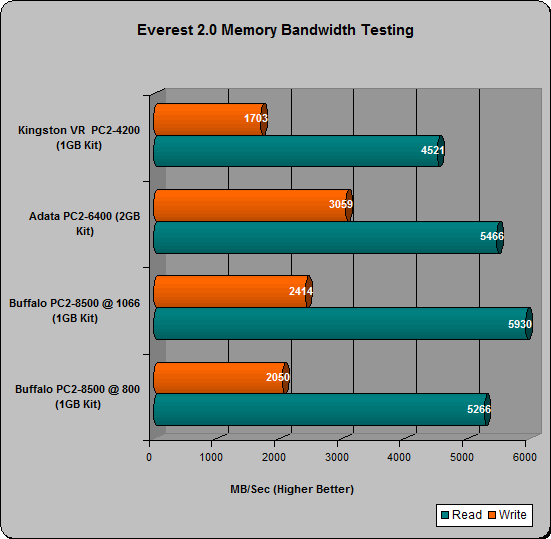
Our Everest results continue the trend that we have seen so far: the Buffalo sticks are certainly superior to the Kingston sticks. There is no way that the single-sided 1GB kits can keep up with the double-sided dimms on the 2GB kit on the Everest write tests, although the read bandwidth of the Buffalo sticks at DDR1066 blows everything else away, even at timings of 5-5-5-18.
Sisoft; Sandra 2005 SR3a:
Sisoft Sandra 2005 is designed to test the theoretical power of a complete system and individual components. The numbers taken though are, again, purely theoretical and may not represent real world performance. Higher numbers represent better performance in memory bandwidth. The chart was based off of the unbuffered bandwidth scores.
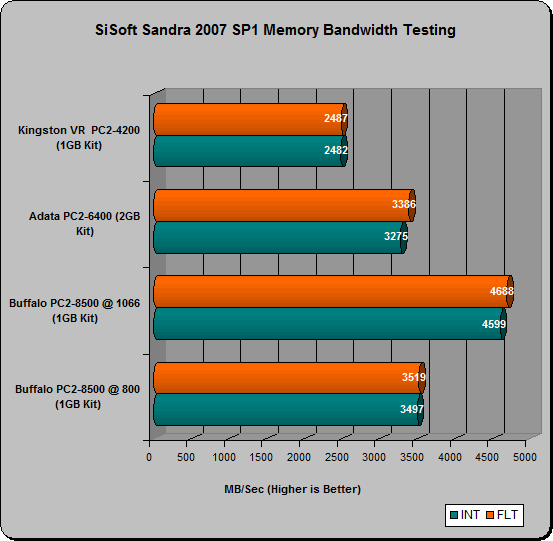
We see the same results on the Sandra scores, as the trend continues.
ScienceMark 2.0 Final:
Science Mark 2.0 is an attempt to put the truth behind benchmarking. In an attempt to model real world demands and performance, ScienceMark 2.0 is a suite of high-performance benchmarks that realistically stress system performance without architectural bias. All of our testing was completed on the 32 Bit Final benchmark version that is dated March 21st 2005.
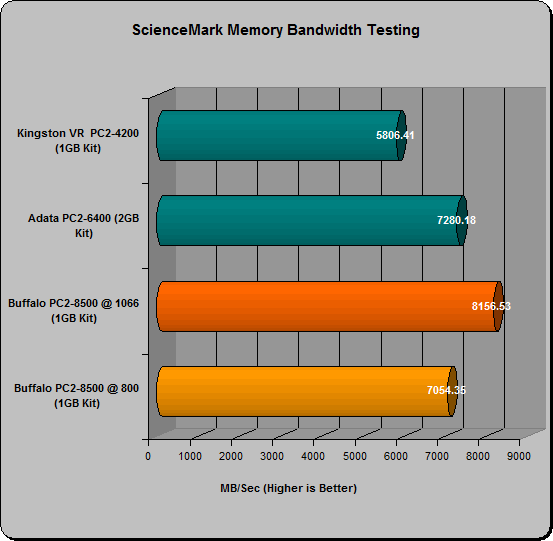
The ScienceMark testing shows us just how much room there is between the Kingston ValuRam sticks and the Buffalo at DDR800. Remember, the Kingston sticks are only rated at DDR533 and are tremendously overclocked here, while the Buffalo sticks are underclocked according to Buffalos Specs.
Let’s take a look at a gaming bench or two, just to see how it stacks up.

Comments are closed.